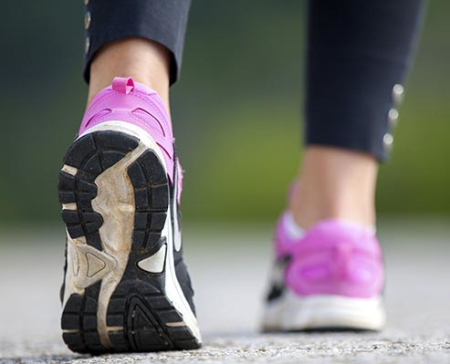Blisters are caused by skin friction from your foot sliding or shifting in your shoe during running and other activities. Fluid collects between the irritated layers of skin tissue and swells. Treating foot blisters should help avoid infection, minimize pain and discomfort, stop swelling and maximize recovery.

Intact blisters:
- Apply a piece of moleskin, adhesive felt or tape that is 1.5 to 3.25 inches larger than the blister, with a central hole slightly larger than the blister.
- Apply antibiotic ointment.
- Place a piece of gauze over the moleskin, felt or tape and add a piece of adhesive tape to hold the gauze in place.
Over-the-counter products such as Mueller® More Skin or Spenco® 2nd Skin® work well for blister relief and protection.
If you plan to continue running, drain blisters in weight-bearing areas that are greater than 0.8-inch in diameter. Follow these steps for treating foot blisters:
- Clean the site with an alcohol wipe or hydrogen peroxide.
- Use a flame sterilized needle to lance two to four holes in the side of the blister.
- Apply pressure to push out the fluid. Clean and dry the skin.
- Apply benzoin around the blister.
- Apply a thin layer of antibiotic ointment at the puncture sites without removing the outer layer of dead skin.
- Apply a blister care product.
- Check the site daily.
If the fluid appears hazy or cloudy in the blister, drain it. Apply antibiotic ointment and a protective covering. Check the site frequently.
Ruptured blisters:
- Treat with antibiotic ointment over the blister and use a protective covering.
- If the outer layer is torn off or only a flap is left, carefully cut off the loose skin, clean the area and cover the new skin with antibiotic ointment. Use a protective covering.
- If infection is present, clean the site frequently, apply antibiotic ointment and see your health care provider for more treatment options.
For more information, contact a sports medicine physician.

